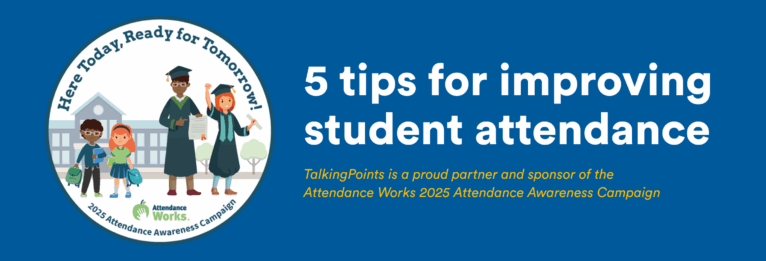Written by Heather Dooley
Practical ways to tap into your greatest (and free!) resource to improve attendance: Families
Chronic absenteeism has long been a challenge for schools and districts—and with good reason. When students miss school, they miss out on learning and face higher risks of poverty, poor health, and involvement in the criminal justice system. Districts suffer, too: because funding is tied to enrollment and attendance, missed days quickly add up. In a district of 20,000 students, just 18 absences per student can cost up to $20 million each year, draining resources for programs and support.
“The pandemic really, really, broke down connections and relationships between kids and schools.” – Hedy Chang, CEO of Attendance Works.
Absence rates spiked during and after the pandemic. While they’ve improved since the peak, in many communities they remain above pre-pandemic levels. The work now is to sustain improvement by rebuilding trust, removing barriers, and maintaining momentum.
The good news is that every district and school has a powerful, often overlooked partner in this work—one that research shows can make a meaningful difference in improving attendance. Families.
Below are five practical ways leaders can partner with families to address barriers that keep students from coming to school, and examples of how the TalkingPoints Attendance Improvement Plus solution makes this easier for both families and staff.
![]()
Discover more about Attendance Improvement with TalkingPoints
![]()
1) Meet families where they are
Families are busy, and many don’t use email or have ready access to a computer or Wi-Fi. Others may be uncomfortable with phone calls or voicemails—especially if they’re less fluent in English or working during school hours.
That’s why text messaging should be the default, two-way channel for family engagement. Nearly every family has a mobile phone, and texting is simple, familiar, and fits seamlessly into daily routines. No apps, log-ins, or Wi-Fi required.
With TalkingPoints, schools reach 99% of families via text, with opt-out rates below 1%.
2) Message families in their preferred language
Strong partnerships start with authentic conversations that build trust. Once two-way texting is your default, the next step is to remove barriers to communication and understanding.
One of the most powerful ways to welcome families is by speaking their language. TalkingPoints provides the highest-quality, two-way translation in 150+ languages, customized for PK–12 education and backed by human support.
But language is only one barrier. Families may also face challenges with literacy, accessibility, or navigating the U.S. education system. To support them, staff can invite families to use the free TalkingPoints for Families mobile app or web version, which offers:
- Speech-to-text (dictate replies)
- Text-to-speech (listen to messages aloud)
- An “Ed 101” tool that explains unfamiliar education terms
- “Help Me Understand” on-demand support for message context and next steps
These supports help families with limited literacy, accessibility needs, or limited familiarity with U.S. schools participate fully in their child’s education—building a culture of inclusion and partnership.
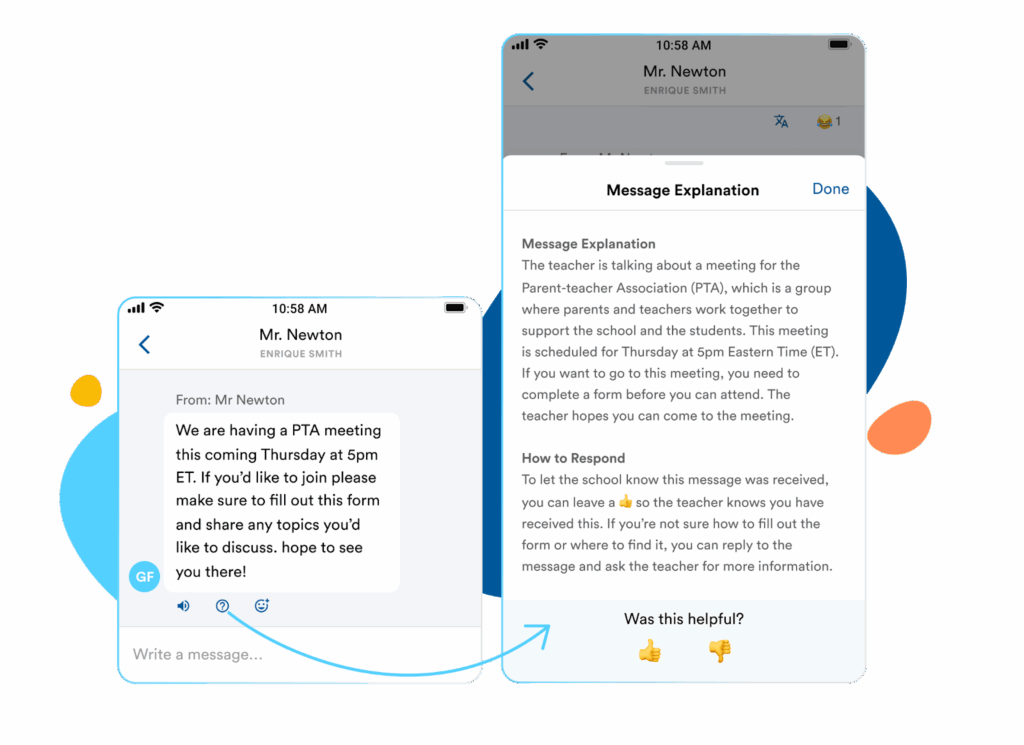
3) Make it easier for everyone–families and staff
Absence reporting and follow-up should feel simple, not intimidating. Families need quick, accessible ways to let schools know why a child is out, and staff need streamlined tools to respond with support instead of punitive measures.
With TalkingPoints, families can text in their home language to report an absence—just as easily as they’d text a teacher. This reduces confusion, encourages fast replies, and ensures no message gets lost.
For staff, a centralized Attendance Inbox keeps all communication organized and translated, while Automated Daily Absence Messages notify families when a student misses school. Personalized outreach guided by data helps teams save time, reduce phone tag, and build trust.
![]() Attendance Inbox:
Attendance Inbox:

![]() Automated Daily Absence Messages:
Automated Daily Absence Messages:
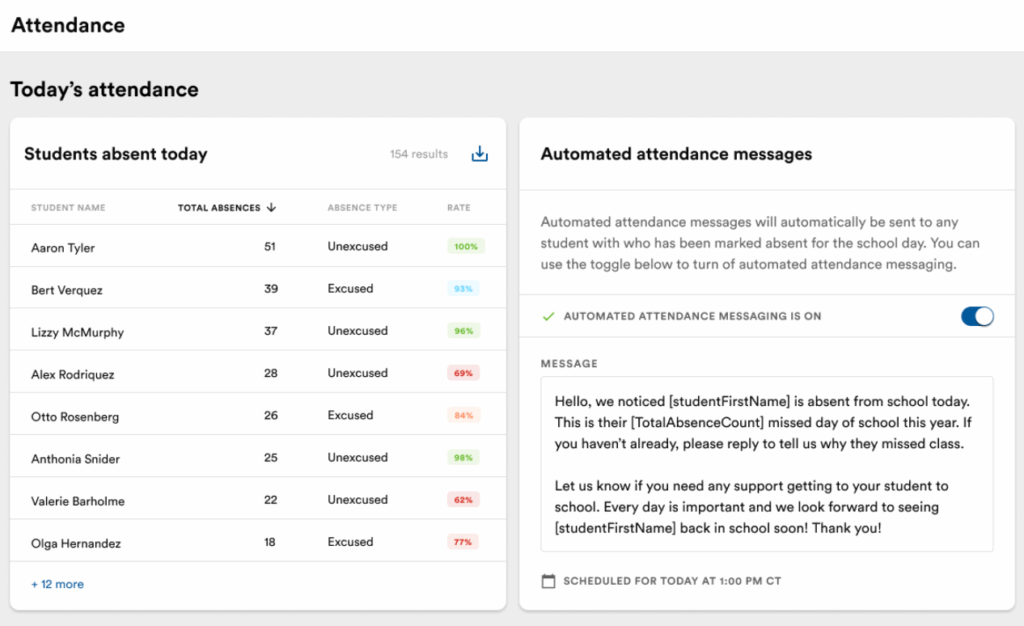
4) Address root causes
Absences are symptoms. The real work is uncovering what’s getting in the way—and responding in partnership with families.
Right now, many districts continue to see transportation gaps, student anxiety, family work schedules, and lingering post-pandemic routines affect daily attendance. Some schools also notice day-specific trends, like more absences on Mondays, tied to family schedules or local context.
“As the nation struggles to find bus drivers, our students suffer. A mom reached out in her native language when the bus didn’t arrive. We quickly relayed the issue and got a bus sent—preventing a missed day.”
— Spencer Higgins, teacher, Pine Grove School, MA
TalkingPoints’ Attendance Dashboard & Attendance Trends surfaces these patterns early, flagging students at risk of chronic absence and equipping staff to respond before issues escalate.
![]() Attendance Dashboard & Trends:
Attendance Dashboard & Trends:
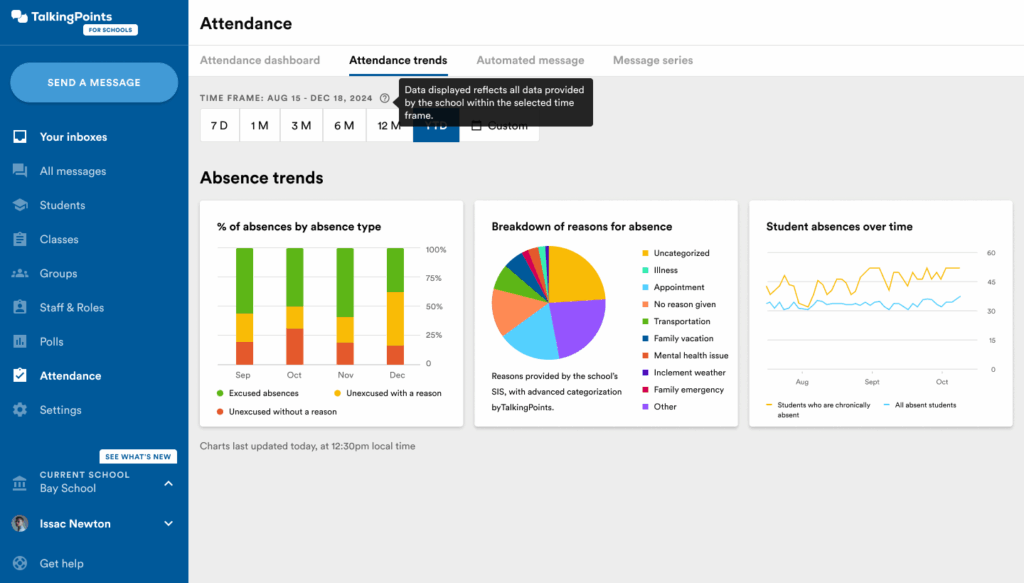
“There have been times when a student is not attending school due to mental health concerns, and I have been able to connect with their parent to see how I can support the family. TalkingPoints allows for me to provide support and resources to the family so parents know their student mattered and the school cares about the family.”
– Stephanie Banuelos, counselor, Hebron High School, TX
Communicate early and often
Many parents don’t realize how quickly absences add up—or how damaging they can be to learning. For example, a student who misses just 18 days each year will have lost the equivalent of an entire school year of learning by the time they graduate.
That’s why leaders should reach out early—ideally before the first day of school—to learn from families about their needs and to explain why consistent attendance is essential to student success. Early, intentional family engagement fosters trust and helps establish a positive, school-going culture.
TalkingPoints supports this with tools like Targeted Attendance Messages that identify and reach families with specific attendance patterns, and an Attendance Messaging Series, which offers research-based, weekly texts that teach families about the importance of attendance and provide practical tips for improvement.
![]() Targeted Attendance Messages:
Targeted Attendance Messages:
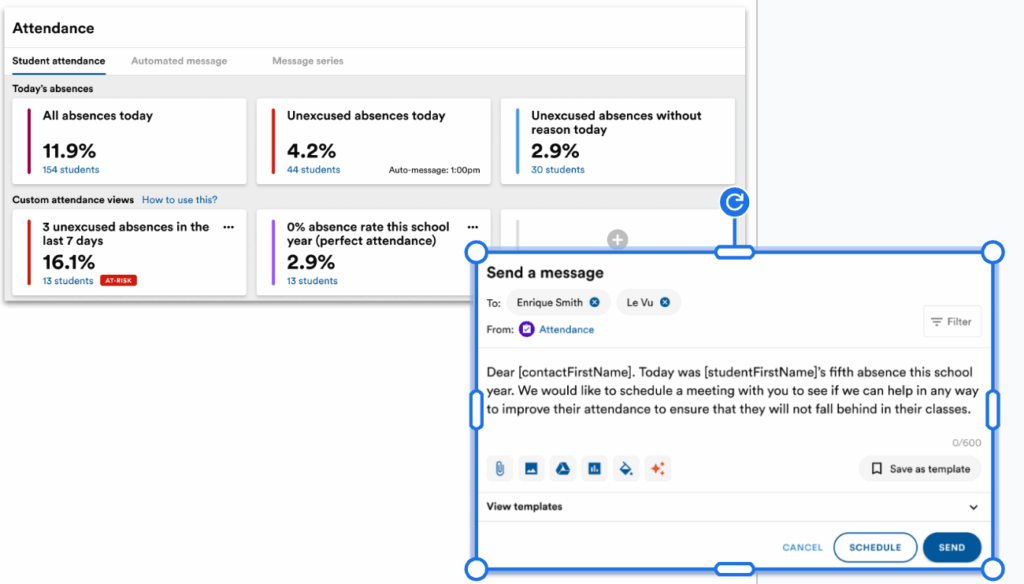
![]() Attendance Messaging Series:
Attendance Messaging Series:

Research underscores the impact:
- Absenteeism in the first month of school can predict poor yearly attendance.
- Attendance rates are better in schools where parents feel welcomed and engaged and where they trust their children are safe.
- Two quasi-experimental studies show TalkingPoints reduced absenteeism:
- In Tulsa Public Schools, use of TalkingPoints drove a 24% drop in absenteeism, equal to six more days of instruction per student annually—with even greater gains among Spanish-speaking households.
- An ESSA-validated study found TalkingPoints associated with a 15% decrease in absenteeism, with even larger gains for historically underserved students:
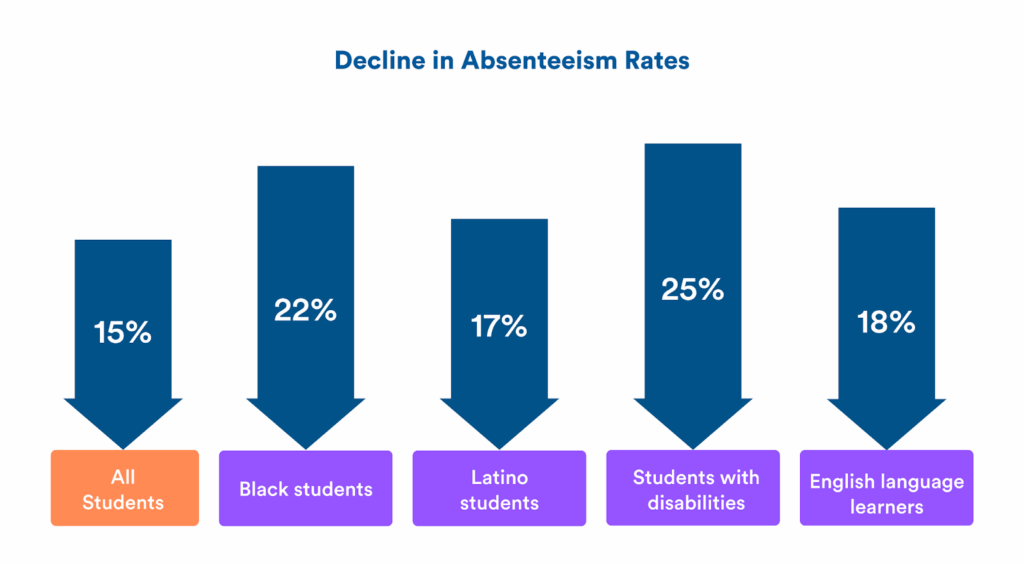
![]()
To learn more, check out our recent webinar Moving the Needle on Attendance: What’s Working NOW, featuring Tulsa Public Schools and Attendance Works.
![]()
5) Share positive, proactive behavior updates
The start of the year is a great time to welcome families and lay the groundwork for productive relationships between home and school.
The name TalkingPoints comes from the idea that when teachers share positive updates—like what a student learned that day—it gives families “talking points” to spark meaningful conversations at home. These exchanges make students feel proud, motivated, and more excited to come to school.
Encourage teachers to connect with each family early on. A quick introduction, learning about a student’s interests, or sending home at least one positive behavior update helps establish trust. By starting with positivity and communicating consistently, educators create a foundation for partnership. Then, if behavior or attendance challenges arise, families are more likely to be receptive—and issues can be addressed before they escalate.
“I use TalkingPoints to communicate with my families on a daily basis. It has helped increase my student’s attendance and allows my parents to engage in their student’s learning.”
— Michael Mulloy, Arvada High School (CO)
![]()
See how Attendance Improvement with TalkingPoints can help your school or district.
![]()
Celebrating 10 years of partnership and impact
 For a decade, TalkingPoints has supported students, families, and educators through the power of effective family-school partnerships. We connect 9 million+ educators, students, and family members annually and have facilitated more than one billion conversations—building trust, fostering relationships, and fueling student success. Named by Common Sense Education as “the best overall family communication platform for teachers and schools,” TalkingPoints drives measurable gains in attendance and academic achievement, backed by rigorous, causal research.
For a decade, TalkingPoints has supported students, families, and educators through the power of effective family-school partnerships. We connect 9 million+ educators, students, and family members annually and have facilitated more than one billion conversations—building trust, fostering relationships, and fueling student success. Named by Common Sense Education as “the best overall family communication platform for teachers and schools,” TalkingPoints drives measurable gains in attendance and academic achievement, backed by rigorous, causal research.
TalkingPoints is the only nonprofit platform with the impact focus and funding model to turn engagement strategies into lasting results—helping systems improve and every student succeed.
Join us in building a future where every child has the support they need to thrive.
